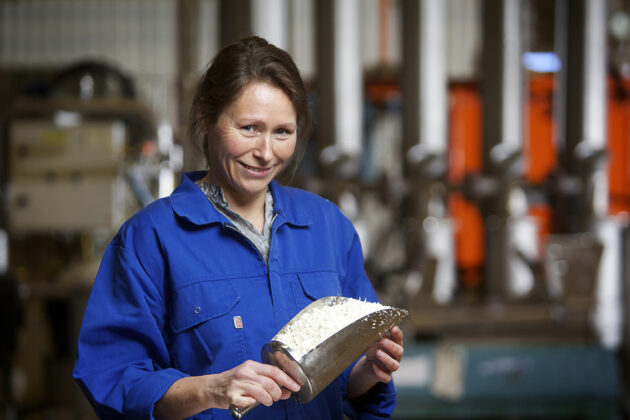Fish bones colour salmon muscle red

A mineral-rich ingredient that researchers at Nofima have extracted from fish bones has produced unexpected effects. In experiments where salmon were fed feed with the ingredient, the colour level of the salmon muscles increased considerably.
The effect, which was first observed in an experiment with salmon smolt, was visible to the naked eye and was confirmed by chemical analyses.
The colour came from astaxanthin, a pigment that lends its distinctive red colour to salmon fillets. This red colour is necessary if the consumer is to accept salmon as a high-quality product. Neither salmon nor any other animals can make astaxanthin themselves. In the sea, algae that make astaxanthin are eaten by small crustaceans, which in turn are eaten by fish, such as salmon. In fish farming, a synthetic pigment is added to salmon feed to achieve the correct red colour in the fillets.
Only a limited portion, usually less than 10 per cent, of the astaxanthin in salmon feed is absorbed in the muscle of farmed salmon. This can be caused by limitations in absorption and transport via blood and liver, or limited absorption and pigmentation in muscle tissue.
Dual utilisation of resource
“It is somewhat unexpected that a mineral ingredient can affect pigment utilisation. But at the same time, it is very positive to see that nutrients liberated from fish bones can considerably increase the utilisation of astaxanthin in salmon feed,” says Sissel Albrektsen, senior researcher at Nofima.
She and her colleagues at Nofima have long researched effective ways to better exploit fish bones. Here, they used an acid to free minerals from the bones of blue whiting in a so-called hydrolysis process. The method is in line with today’s bioeconomic mindset, where the aim is maximum exploitation of all parts of the raw material, and creation of maximum value in all side streams in the production process. Increased astaxanthin exploitation is a very positive side effect that also carries a high market value.
The fish digest the nutrients better
Feed with the phosphorus-rich mineral ingredient was also tested on slightly larger salmon during the growth period from 1.7 to 2.5 kilograms, and compared with salmon that received the same feed to which a regular source of commercial phosphorus was added.
In muscle, the researchers found a whopping 35 per cent more colour, measured as milligrams of astaxanthin per kg of fish growth – which in technical terms is called pigment retention. The salmon’s ability to digest astaxanthin increased by nearly 20 per cent in fish fed the mineral ingredient, while the pigment levels in both the blood and liver also increased.
“We believe that the main explanation of why the muscle becomes redder is that the salmon digest more of the astaxanthin with the mineral ingredient present in the feed,” says Albrektsen.
It has been repeatedly proven in salmon that the mineral ingredient stimulates increased growth, and in some cases this is explained by increased digestibility of nutrients.
In the initial experiment with smaller salmon, it was found that the astaxanthin levels in blood, liver and whole fish were 55, 29 and 22 per cent higher, respectively, compared with fish that were fed an ordinary source of commercial phosphorus.
Why this is so remains to be discovered.
“In an experiment now taking place, we will take a closer look at how minerals and other liberated components in fish bones can affect processes including intestinal function,” says Albrektsen.
The research is part of an ongoing FORNY (renewal) project funded by the Research Council of Norway.
Contact person
Research areas
Feed development and nutrition
Topics
Fish feed
